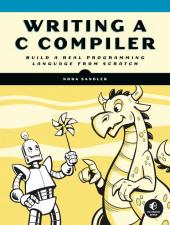Acknowledgments
Introduction
Part I: The Basics
Chapter 1: A Minimal Compiler
Chapter 2: Unary Operators
Chapter 3: Binary Operators
Chapter 4: Logical and Relational Operators
Chapter 5: Local Variables
Chapter 6: If Statements and Conditional Expressions
Chapter 7: Compound Statements
Chapter 8: Loops
Chapter 9: Functions
Chapter 10: File-scope Variables and Storage-class
Specifiers
Part II: Types Beyond Int
Chapter 11: Long Integers
Chapter 12: Unsigned Integers
Chapter 13: Floating-Point Numbers
Chapter 14: Pointers
Chapter 15: Arrays and Pointer Arithmetic
Chapter 16: Characters and Strings
Chapter 17: Supporting Dynamic Memory Allocation
Chapter 18: Structures
Part III: Optimizations
Chapter 19: Optimizing Tacky Programs
Chapter 20: Register Allocation
Next Steps
Appendix A: Debugging Assembly Code with GDB or LLDB
Appendix B: Assembly Generation and Code Emission Tables
References
The chapters in red are included in this Early Access PDF.

